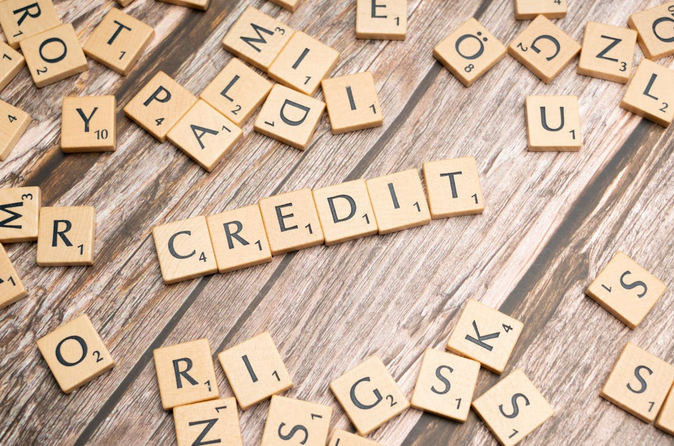Year: 2024

Top Tips for Building a Diversified Digital Asset Portfolio
- by Benjamin Garza
- 1 year ago
- 0 comments
In the fast-paced and ever-evolving world of digital assets, savvy investors know that playing it bright means more than just picking a few popular cryptocurrencies and hoping for the best. Building a well-diversified digital asset portfolio is the key to navigating the ups and downs of this exciting market. Whether you’re a seasoned trader or just dipping your toes into the crypto waters, having a variety of digital assets can help you minimize risks and maximize returns. Ready to dive into the top tips for creating a balanced and robust digital asset portfolio? Let’s get started. For a deeper dive into this topic, you can review this crypto airdrop blog and explore the latest trends and strategies to help you navigate the crypto landscape.
Mix Different Types of Digital Assets
 The first step to diversification is mixing different types of digital assets. While cryptocurrencies like Bitcoin and Ethereum are well-known, the digital asset space offers various other opportunities, including utility, security, stablecoins, and non-fungible (NFTs) tokens. You can spread your investment risk by including a mix of these asset types. For instance, while Bitcoin might provide long-term value storage, utility tokens may offer access to specific platforms, and stablecoins can hedge against volatility. Diversifying across different digital assets can protect your portfolio from market fluctuations affecting a single asset type.
The first step to diversification is mixing different types of digital assets. While cryptocurrencies like Bitcoin and Ethereum are well-known, the digital asset space offers various other opportunities, including utility, security, stablecoins, and non-fungible (NFTs) tokens. You can spread your investment risk by including a mix of these asset types. For instance, while Bitcoin might provide long-term value storage, utility tokens may offer access to specific platforms, and stablecoins can hedge against volatility. Diversifying across different digital assets can protect your portfolio from market fluctuations affecting a single asset type.
Invest in Different Sectors and Technologies
The digital asset space is not limited to currencies; it spans various sectors and technologies. The opportunities are vast from decentralized finance (DeFi) platforms and blockchain-based supply chains to digital identity verification and decentralized applications (dApps). Investing across different sectors can further diversify your risk. For example, if you invest in both a DeFi platform token and a blockchain infrastructure token, poor performance in the DeFi sector won’t necessarily mean losses across your entire portfolio. Consider emerging trends and technologies within the digital asset space to capture potential growth.
Allocate by Market Capitalization
Market capitalization, the total value of a cryptocurrency, can serve as a helpful guide when allocating assets. Large-cap digital assets like Bitcoin and Ethereum tend to be more stable than smaller-cap altcoins, which might offer higher growth potential but come with increased volatility. A diversified portfolio might include a mix of large-cap, mid-cap, and small-cap digital assets, balancing stability with growth potential. Allocating by market cap helps manage risk, as large-cap assets can provide a foundation of stability, while mid and small-cap assets can drive portfolio growth.
Regularly Rebalance Your Portfolio
The digital asset market is highly dynamic, constantly changing prices and market conditions. Regularly rebalancing your portfolio is crucial to maintaining your desired level of diversification. Rebalancing involves periodically adjusting your portfolio to align with your investment goals and risk tolerance. For instance, if one asset’s value significantly increases, it might disproportionately dominate your portfolio, increasing risk. By rebalancing, you can sell some of the appreciated assets and reinvest in underrepresented ones, ensuring a balanced approach that adheres to your strategy.
Stay Informed and Adapt to Market Trends
Staying informed about the latest market trends and news is vital for successful diversification. Technological advancements, regulatory changes, and global economic factors influence the digital asset market. By keeping up-to-date with industry news, you can identify new investment opportunities and adjust your portfolio to reflect current conditions. Subscribing to reputable cryptocurrency news sources, following expert analysis, and participating in community forums can provide valuable insights. Being proactive and adaptable to market changes can enhance your portfolio’s resilience.
Building a diversified digital asset portfolio is a strategic approach to managing risk and maximizing returns in the volatile world of digital investments. By mixing different types of digital assets, investing across sectors, allocating by market capitalization, regularly rebalancing, and staying informed about market trends, you can create a robust portfolio that withstands market fluctuations. Remember, the key to successful diversification is continuous learning and adapting your strategy to the ever-evolving digital asset landscape.…
Read More
Can Quick Loans Improve Your Credit Score? Here’s the Truth
- by Victor Richmond
- 1 year ago
- 0 comments
If your credit score is going crazy and getting lower and lower, it’s time to make a smart financial move. Improving your credit score actually has lots of paths you can choose from. One popular choice is getting quick loans. You might wonder, can these fast solutions really give your credit a boost? The answer isn’t as simple as yes or no.
Getting a pikalaina heti tilille can have both positive and negative effects on your credit health. In this blog post, we’ll explore how on-time payments can help raise your score, the benefits of diversifying your credit mix, and the consequences of missing payments. Plus, we’ll discuss whether using a quick loan to pay off existing debt could be a smart move for you. Let’s dive straight into the details.
On-Time Payments Boost Your Score
One of the simplest ways to enhance your credit score is through on-time payments. Every month, when you make timely payments on a quick loan, you’re ultimately sending a positive signal to credit bureaus. These punctual payments show that you’re responsible and reliable with borrowed money.
Over time, this consistency builds trust in your financial habits. Even a single late payment can have lasting consequences. A missed deadline might drop your score significantly and undo months of effort. It’s crucial to stay organized and set reminders if needed. By prioritizing these payments, you not only maintain good standing but also pave the way for future loans or credit opportunities.
Diversifying Your Credit Mix Can Benefit Your Credit Score
A healthy credit score often hinges on your credit mix. This refers to the unique variety of credit accounts you hold, such as revolving accounts like credit cards and installment loans like personal or quick loans. When lenders see a diverse portfolio, they’re more likely to view you as a responsible borrower. It signals that you can manage different types of debt effectively. That said, adding a quick loan to your mix might eventually help improve your overall score if managed well. This shows creditors you’re capable of handling various financial responsibilities.

Missing Payments on a Quick Loan Can Harm Your Credit Score
Without a doubt, when you take out a loan, lenders expect timely repayments. Failing to meet these obligations signals financial instability. Each missed payment gets reported to credit bureaus. This negatively impacts your credit report and can lower your score significantly. A single late payment might seem minor but its effects linger for years.
Moreover, the longer you wait to make that payment, the worse it gets. Late fees accumulate, and the lender may escalate their collection efforts. This not only adds stress but could further damage your financial reputation. In short, missing payments is a slippery slope that affects more than just one aspect of your finances; it influences future borrowing opportunities as well.
Using the Loan to Pay Off Credit Card Debt Can Lead to a Higher Credit Score
Using a quick loan to pay off credit card debt can also be a strategic move for your financial health. Credit cards often carry high interest rates, and consolidating that debt into a single loan may reduce the overall interest you pay. When you pay off those balances, your credit utilization ratio decreases. Lenders typically prefer borrowers who use less of their available credit. A lower ratio signals responsible usage, which can give your score a boost. Moreover, having fewer open accounts means managing payments becomes simpler. This streamlined approach makes it easier to stay on top of deadlines and maintain an on-time payment history—another critical factor in improving your score.
So, should you get a quick loan? Before answering to this question, you need to weigh the pros and cons carefully. Whether or not you should get a quick loan depends on your individual financial situation and goals. Just be sure you’re informed and ready for the commitment involved with taking out such a loan—your credit future might depend on it.…
Read More